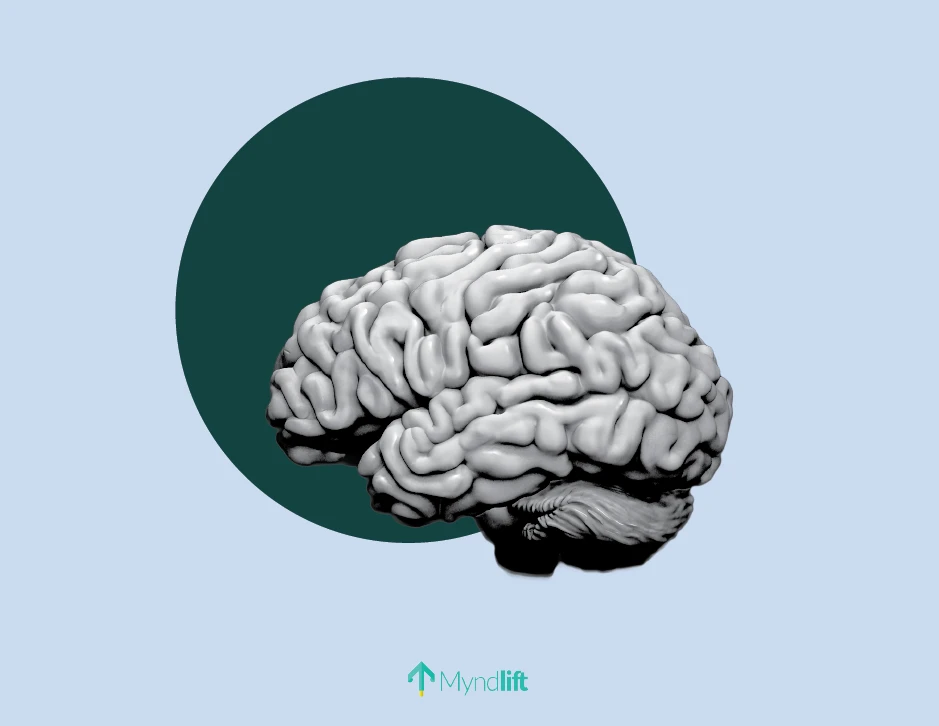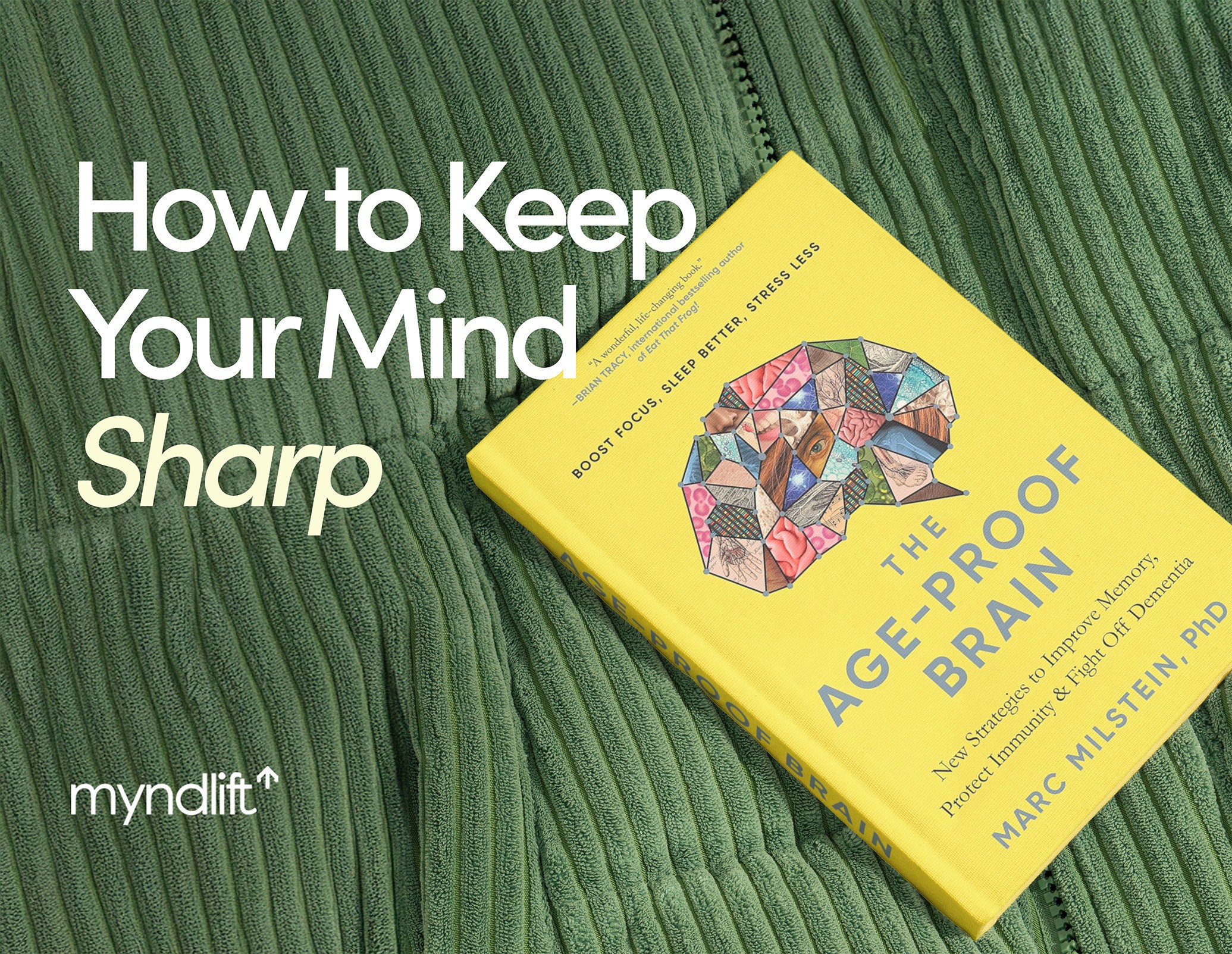We are experiencing a lot as a collective – climate change, the repercussions of a pandemic, and political turmoil, to name a few. Therefore, it comes as no surprise to know that, despite being the most health-aware society in human history, chronic physical and mental health illnesses and afflictions are at an all-time high. We have been conditioned to view their prevalence as unfortunate occurrences, filled with mystery. But what would happen if we shifted our perspective a little bit?
In The Myth of Normal: Trauma, Illness & Healing in a Toxic Culture, Gabor and Daniel Maté challenge us to ask, "What if we begin to see illness itself not as a cruel twist of fate or some nefarious mystery but rather as an expected and, therefore, normal consequence of abnormal, unnatural circumstances?"
The book questions if the prevalence of diseases is the expression of how we live. It does this by exploring the ways our global culture, including social structures, belief systems, assumptions, and values, might be perpetuating toxic behavior patterns.
According to the book, understanding our individual and collective trauma can help us recognize unhealthy mechanisms that we’ve become accustomed to, help us heal, and create healthier, more compassionate communities.
The six lessons that we learned from The Myth of Normal are:
What trauma is and how it shapes us
How trauma separates us from our bodies
How trauma limits our response flexibility
How trauma distorts our view of the world and our view of the self
How trauma alienates us from the present
What will it take to unmake the myth of normal
1. What Trauma Is and How It Shapes Us
“Trauma is not what happens to you, but what happens inside you.” – Gabor Maté
To explain what trauma is, Gabor and Daniel Maté offer an example of a car accident where someone sustains a concussion: The accident is what happened, and the injury is what lasts.
According to the authors, trauma is a psychological injury, a lasting rupture or split within the self due to difficult or hurtful events. It’s lodged in our nervous system, mind, and body and dictates much of our behavior, shapes our social habits, and alters our way of thinking.
But how will we know if we have experienced trauma or not? The Myth of Normal explains that an event is traumatizing only if it makes us psychologically (or physically) more limited than before in a way that persists.
Everyone experiences trauma differently, and it's difficult to predict how a person may respond or react. But one of the most common signs can include persistent fear, anxiety, depression, emotional numbness, avoidance of triggering topics or activities, flashbacks, nightmares, and physical symptoms such as headaches or stomach aches.
2. How Trauma Separates Us From Our Bodies
When we experience trauma, although the body may be physically functioning, the mind may be in a state of disconnect or numbness, which can lead to a feeling of dissociation from the body.
This disconnect can cause a sense of alienation from one's body and a feeling of being "out of touch" with the body's physical sensations. It can also lead to a decreased ability to regulate emotions, behavior, and physical sensations.
Disconnection from the body is a natural coping mechanism when we are faced with a traumatic event, and it helps us survive extreme physical and emotional distress. But sometimes, disconnection may become a fixed mechanism long after the event plays out.
For example, following a traumatic experience, we might go about our day or work extensively without awareness of our need to pause, eat, and rest. Or not know when to stop eating or drinking.
Such decreased ability to recognize and respond to physical signs of stress can result in impaired immune system functioning, reduced ability to regulate emotions, and increased risk of chronic physical illnesses.
Interestingly, across many Western countries, rates of autoinflammatory and autoimmune diseases, including everything from celiac disease to inflammatory bowel disease (IBD), from lupus to type 1 diabetes, and even allergies, are steadily rising. In fact, 5-8% of Americans have one of these often debilitating, generally lifelong conditions.
Since all autoimmune diseases are characterized by inflammation of the afflicted tissues, organs, and body parts, the book raises the question of whether the rapid increase in these diseases may have something to do with our social environment, or a combination of things, which is inflaming our bodies.
3. How Trauma Limits Our Response Flexibility
Response flexibility is our ability to pause and choose how we will react. Trauma can cause us to get stuck in a predictable, automatic cycle of defensive reactions – especially in response to stressful events. For example, we might get impatient and quickly get annoyed, particularly over minor things.
Impaired response flexibility can lead to increased levels of stress hormones, which can enhance the risk of chronic diseases, such as cardiovascular disease and diabetes. This can also potentially worsen existing chronic illnesses.
In the book, Gabor and Daniel Maté suggest that, in our society, the most widespread emotional triggers for stress are psychological factors such as uncertainty, conflict, lack of control, and lack of information. In other words, factors that are considered the most stressful stimuli.
4. How Trauma Distorts Our View of the World, and View of the Self
According to The Myth of Normal, trauma can make us become either fearful and overly suspicious or look at the world from a naively rosy perspective. Both perceptions may impose a distorted worldview and may impact our life choices.
Seeing the world as a dangerous place where only winners thrive can cause one to become aggressive and grandiose to “survive” as a result. This may lead us to gravitate toward competitive environments that can only confirm that view and reinforce its validity. As Gabor Maté states, "Our beliefs are not only self-fulfilling; they are world-building."
Trauma also fosters a shame-based view of the self. For example, if we've experienced something that has caused us to feel powerless or vulnerable, we may develop self-blame, a negative self-perception, shame, and a loss of compassion for ourselves as a result.
The Myth of Normal states that the most common form of shame assumed in our global culture is the belief that, "I am not enough." Based on Dr. Gabor Maté’s clinical experience, that conviction of one's inadequacy can fuel our careers and instigate many instances of illness, often both in the same individual.
5. How Trauma Alienates Us From the Present
Those who experience trauma may become more inclined to avoid any type of reminder of said trauma. And while avoiding triggers might seem like the right thing to do, it can potentially make us feel disconnected from others and ourselves by making it difficult to engage with the present moment.
If we're not able to pay attention to what's happening right now, our minds may easily be filled with thoughts about our work, our social media profiles, or the latest Netflix show. Gabor and Daniel Maté propose that work pressures, multitasking, social media, and assortments of entertainment sources may all induce us to become further lost in thoughts, frantic activities, gadgets, and meaningless conversations.
They claim, "Awareness of the moment has become something to fear. Late-stage capitalism is expert in catering to this sense of present-moment dread – in fact, much of its success depends on the chasm between us and the present, our greatest gift."
6. What Will It Take To Unmake the Myth of Normal
“It’s not just people that need the healing. It’s the system that has to be indicted and transformed.” - Dr. Nneka Jones Tapia.
The book states that everyone's trauma experiences and reactions to them are different, and that's why no path toward healing looks identical for any two people.
However, there are healing principles and exercises that can help guide us to individual healing. For example, how to be authentic, not striving for an idealized self-image, and nurturing curiosity to question the systemic roots of why things are the way they are.
But the responsibility for healing doesn’t merely fall on the individual; there are things we can strive to do as a society, such as:
Trauma awareness in medicine: In the dozens of interviews that Gabor Maté conducted with medical colleagues, none of the interviewees recalled being taught about mind-body unity. And even though there's a growing number of research on the relationship between trauma and mental illness, including addictive disorders, Gabor Maté noticed a powerful resistance to trauma awareness on the part of the medical profession.
Trauma awareness in law: Despite the documented fact that many prison inmates committed crimes out of dynamics originating in severe childhood suffering, law studies do not include learning about trauma mechanisms. The book suggests reforming a trauma-informed legal system that would replace punitive measures with programs designed to rehabilitate people and not traumatize them further.
Trauma awareness in education: The authors state that because trauma affects kids' abilities to learn, a trauma-informed educational system would train teachers to be well-versed in the science of development. Ideally, teachers would recognize signs and signals of children's "acting out" as markers of emotional pain rather than viewing them as bad behaviors to be suppressed or as causes for punishment or exclusion.
According to The Myth of Normal, the context of social structures, belief systems, assumptions, and values that surround us should be rethought. However, as the authors explain, this assertion and using the term toxic culture is not used to lay blame. Rather, it's to understand the bigger picture for the purpose of prevention and healing.
Gabor and Daniel Maté bring to our attention that recognition of the unhealthy culture in which we live in has never been more urgent and that the change starts with each of us. The first step towards change is refusing to accept the status quo and rejecting the myth of what is normal so we can work to change what we may not realize is broken.
Myndlift provides professional supervised brain training that can be done right from the comfort of your home. Connect with us to kick start your journey for better brain health and wellbeing from here.
About the author:
Dubravka Rebic
Dubravka Rebic puts a lot of time and energy into researching and writing in order to help create awareness and positive change in the mental health space. From poring over scientific studies to reading entire books in order to write a single content piece, she puts in the hard work to ensure her content is of the highest quality and provides maximum value.
About the checker:
Carola Tuerk, Ph.D.
Carola is a cognitive neuroscientist and a scientific consultant for Myndlift. In her research, she is particularly interested in how early life experiences shape brain development and mental health with a particular focus on children. She has obtained a BSc in psychology, an MSc in neuroscience, and a PhD in cognitive neuroscience and is passionate about brain health. In her free time, Carola likes to exercise or play music to relax.
References
Mate, Gabor, and Daniel Mate. The Myth of Normal: Trauma, Illness & Healing in a Toxic Culture. Penguin Random House LLC, 2022.
Sherin JE, Nemeroff CB. Post-traumatic stress disorder: the neurobiological impact of psychological trauma. Dialogues Clin Neurosci. 2011;13(3):263-78. doi: 10.31887/DCNS.2011.13.2/jsherin. PMID: 22034143; PMCID: PMC3182008.
Lancaster CL, Teeters JB, Gros DF, Back SE. Posttraumatic Stress Disorder: Overview of Evidence-Based Assessment and Treatment. J Clin Med. 2016 Nov 22;5(11):105. doi: 10.3390/jcm5110105. PMID: 27879650; PMCID: PMC5126802.
Kearney BE, Lanius RA. The brain-body disconnect: A somatic sensory basis for trauma-related disorders. Front Neurosci. 2022 Nov 21;16:1015749. doi: 10.3389/fnins.2022.1015749. PMID: 36478879; PMCID: PMC9720153.
Seiler, A., Fagundes, C.P., Christian, L.M. (2020). The Impact of Everyday Stressors on the Immune System and Health. In: Choukèr, A. (eds) Stress Challenges and Immunity in Space. Springer, Cham. https://doi.org/10.1007/978-3-030-16996-1_6
Shepherd L, Wild J. Emotion regulation, physiological arousal and PTSD symptoms in trauma-exposed individuals. J Behav Ther Exp Psychiatry. 2014 Sep;45(3):360-7. doi: 10.1016/j.jbtep.2014.03.002. Epub 2014 Mar 26. PMID: 24727342; PMCID: PMC4053589.
Mock SE, Arai SM. Childhood trauma and chronic illness in adulthood: mental health and socioeconomic status as explanatory factors and buffers. Front Psychol. 2011 Jan 31;1:246. doi: 10.3389/fpsyg.2010.00246. PMID: 21833299; PMCID: PMC3153850.
Pohl D, Benseler S. Systemic inflammatory and autoimmune disorders. Handb Clin Neurol. 2013;112:1243-52. doi: 10.1016/B978-0-444-52910-7.00047-7. PMID: 23622335.
Rodenburg, J., Heesink, L., Drožđek, B. (2015). PTSD, Anger and Aggression: Epidemiology, Aetiology and Clinical Practice. In: Martin, C., Preedy, V., Patel, V. (eds) Comprehensive Guide to Post-Traumatic Stress Disorder. Springer, Cham. https://doi.org/10.1007/978-3-319-08613-2_82-1
Fuller-Thomson E, Bejan R, Hunter JT, Grundland T, Brennenstuhl S. The link between childhood sexual abuse and myocardial infarction in a population-based study. Child Abuse Negl. 2012 Sep;36(9):656-65. doi: 10.1016/j.chiabu.2012.06.001. Epub 2012 Sep 1. PMID: 22943837.
Merabet N, Lucassen PJ, Crielaard L, Stronks K, Quax R, Sloot PMA, la Fleur SE, Nicolaou M. How exposure to chronic stress contributes to the development of type 2 diabetes: A complexity science approach. Front Neuroendocrinol. 2022 Apr;65:100972. doi: 10.1016/j.yfrne.2021.100972. Epub 2021 Dec 17. PMID: 34929260.
Carnegie Mellon University. (2012, April 2). How stress influences disease: Study reveals inflammation as the culprit. ScienceDaily. Retrieved January 9, 2023 from www.sciencedaily.com/releases/2012/04/120402162546.htm
Blum, A. (2008). Shame and guilt, misconceptions and controversies: A critical review of the literature. Traumatology, 14(3), 91–102. https://doi.org/10.1177/1534765608321070
Van der Kolk B. Posttraumatic stress disorder and the nature of trauma. Dialogues Clin Neurosci. 2000 Mar;2(1):7-22. doi: 10.31887/DCNS.2000.2.1/bvdkolk. PMID: 22034447; PMCID: PMC3181584.
Rogers NT, Power C, Pinto Pereira SM. Child maltreatment, early life socioeconomic disadvantage and all-cause mortality in mid-adulthood: findings from a prospective British birth cohort BMJ Open 2021;11:e050914. doi: 10.1136/bmjopen-2021-050914
Wolff N, Shi J. Childhood and adult trauma experiences of incarcerated persons and their relationship to adult behavioral health problems and treatment. Int J Environ Res Public Health. 2012 May;9(5):1908-26. doi: 10.3390/ijerph9051908. Epub 2012 May 18. PMID: 22754481; PMCID: PMC3386595.





